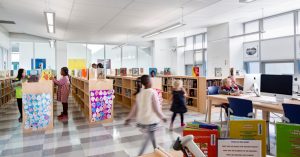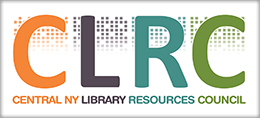First Net Zero School in NYC
 According to the Department of Energy, “generally speaking, a zero energy building produces enough renewable energy to meet its own annual energy consumption requirements, thereby reducing the use of non-renewable energy in the building sector.” The potential long-term advantages to building a Net Zero facility includes lower environmental impacts, operating and maintenance costs and resilience to outages and natural disasters.
According to the Department of Energy, “generally speaking, a zero energy building produces enough renewable energy to meet its own annual energy consumption requirements, thereby reducing the use of non-renewable energy in the building sector.” The potential long-term advantages to building a Net Zero facility includes lower environmental impacts, operating and maintenance costs and resilience to outages and natural disasters.
(http://energy.gov/eere/buildings/downloads/common-definition-zero-energy-buildings)
First Net Zero School in New York City.
The Kathleen Grimm School for Leadership and Sustainability at Sandy Ground, or P.S. 62 opened its doors in September 2015. Designed by Skidmore, Owings & Merrill, the two story building is where young students can learn and play on this sustainable, yet whimsical campus. The school responded to the challenge to reduce greenhouse gas emissions, a component of the city’s OneNYC initiative; designed to generate as much energy as it consumes.
Natural light was one of the project’s most effective energy-saving features. The school was oriented slightly off the north-south axis to capture the greatest amount of sunlight during the school day. Other sustainable and low-energy features incorporated in the design include, energy-efficient lighting fixtures, a geo-exchange system, energy recovery ventilators and demand-control ventilation.
Students at the PK-5 school can help generate energy by riding stationary bicycles. Outdoor gardens and a greenhouse in the courtyard are expected to produce food for the cafeteria and serve as a natural classroom teaching kids about where their food comes from.
Chrisney Public Library: A Community Project

Chrisney Public Library with solar panels.
When Chrisney residents first proposed a new library in 2006, sustainable design was not on their mind; they just wanted a library in their own town. Around the same time as the community was trying to figure out how to fund a library, William Brown, a library design specialist and chair of the U.S. Green Building Council for Indiana entered the picture.
Brown convinced the library board that going with a net-zero energy building would save money and as a result the project became attractive to grantors, community members and the local officials. The library received nearly a half-million dollars in grants. $80,000 from the 540 residents and the local officials donated a wooded lot, offered free sewer and water as well as site maintenance. The Nation’s first net-zero library opened its doors in April 2009.
The woods help keep the building cool in the summer, while also allowing enough light in to charge the solar panels. Reflective materials on the interior helped reduce the need for daytime lighting as well as heating up the thermal floor during the winter. As a result, the first four years the library was opened, it never paid a utility bill. Community members can use the Sunny Portal to check out how much energy the building creates, the amount of C02 avoided and the amount of money that is being saved. http://tinyurl.com/y86oajg
For more information visit: http://www.lincolnheritage.lib.in.us/#!chrisney-branch/c11m6
